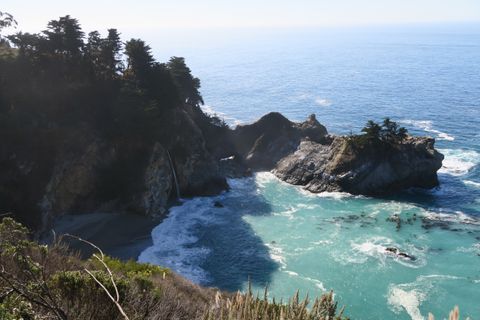Making my website has been like...a year-long endeavor. I guess it's never really finished, right? I just want to briefly talk about where the website's been and where its going.
Originally, my site was built using Fruition. It was a quick way to get started with a website by directly connecting it to my notion. It was slow, and hard to customize though, so I eventually moved it away to using the unofficial notion API built by Splitbee (when Notion didn't have an API):
GitHub - splitbee/notion-api-worker: Notion as CMS with easy API access
Notion as CMS with easy API access. Contribute to splitbee/notion-api-worker development by creating an account on GitHub.
At that point, I was using Next.js with Tailwind. Honestly, when I was done, it felt like complete magic. It didn't take much time at all, and all my Notion pages rendered almost seamlessly in my own design language. And publishing a blog post was as easy as adding a new Notion page to a database.
It wasn't a perfect solution though -- the more I worked with using Notion, the more flaws I saw it had.
Out of curiosity, I peeked into the javascript files notion downloads every time I open a page...uhh @NotionHQ care to explain yourself... pic.twitter.com/viP0VrF2XL
— Tanishq Kancharla (tk) 🌊 (@moonriseTK) June 23, 2020
(this was before I was working on the website, but its a good example of just the confusing garbage Notion's internal API was sending).
I also became pretty disillusioned with Tailwind.
I got annoyed with how long my class names ended up being, and that there wasn't a good first-class solution for it. I also just wanted my html to be hella clean and semantic (look at the source of this website!). So I ejected Tailwind and just rebuilt it in CSS.
Regarding the Notion issue, I'm still working on it, but I've also ripped it out for now. I'd love to use Notion's official API, but they don't support non-text blocks yet.
So how does my blog work now? Well...I started using MDX, but it didn't click for me. I just felt that if I wanted custom components in my prose, I should just be able to extend Markdown's existing syntax. MDX isn't annoying to use or anything...its just a matter of principle like I shouldn't have to switch to React syntax when I want something as simple as a toggle block.
So, naturally, I just built my own parser for a custom prose format. The whole thing is about 300 lines of code, and that's reading .tk files, parsing them into an AST and recompiling them into HTML. I can't stress how easy Ohm-js made this for me. With 0 parser experience to building a markdown+ format in like 4 hours. Here is the spec for my format:
MarkdownOuter {
doc = h1 divider line divider block+
block = blank | h3 | h2 | h1 | divider | image | block_link | toggle | bullet_list | code | blockquote | para | endline
h3 = "### " rest
h2 = "## " rest
h1 = "# " rest
divider = ("---" nl) | ("***" nl)
block_link = "[" (~"]" ~nl any)+ "]" nl
blockquote = inner_block+
inner_block = "| " (image | line)
image = "/ " (~(nl | sp) any)* " / " line
toggle = "> " line inner_block+
para = line+ // paragraph is just multiple consecutive lines
bullet_list = "- " (~"-" ~blank ~(nl nl) rest)* (bullet)*
bullet = "- " rest (~"-" ~blank ~(nl nl) rest)*
code = q rest (~q any)* q //anything between the \`\`\` markers
q = "\`\`\`" // start and end code blocks
nl = "\\n" // new line
sp = " "
blank = sp* nl // blank line has only newline
endline = (~nl any)+ end
line = (~nl any)+ nl // line has at least one letter
rest = (~nl any)* nl // everything to the end of the line
}and that's it! A single document, as you can see at the top, consists of a heading, followed by a descriptive line, and then the full content. I pass that into Ohm, along with semantic definitions of each node, and out pops an AST. I could save a little bit of time and condense my code quite a bit if I simply pass in the html equivalents directly to Ohm, but having an AST in between is nice for debugging.
I'm still figuring out the rest of my setup. I don't know if I'll completely move everything away from Notion or move everything back when the official API does everything I want it to. Big question is the projects page, which I've linked to the Notion page currently. Maybe I'll use another Ohm parser.
Things I want:
A feed of things I'm thinking about, or a changelog for things that were updated on my website recently.
Little pieces of art/illustration all over the place. Maybe sharks that follow around your cursor?
Minigames. I have one idea kind of like Google's disconnected dinosaur game, except its someone surfing and jumping over obstacles.
